Last week, I mentioned that I’m soon heading to an experimental forest for some writing, so I’m spending time in Taking Bearings with forests to set my mind in the right direction. This week for The Field Trip, I took a short drive to a nearby state park for a quick walk in the woods.
Connections abounded. This site prompted me to think and wonder about changes over time. (Of course, pretty much every place makes me do that!) But maybe this afternoon jaunt included a bit more than normal. Read on!
More than a Bridge
Many people recognize the bridge at Deception Pass. But there is more to Deception Pass State Park than the iconic bridge that connects Fidalgo Island to Whidbey Island. As the only road route to Whidbey, it attracts traffic and makes the park the state’s most visited one
For good reason. Walking across the bridge brings breathtaking views – and some vertigo!
Yet beyond the bridge, the park contains around 4,000 acres and many miles of hiking trails, lots of beaches, and some big trees. I have spent a little time on the trails and beaches before but wanted to experience the trees.
Getting There
My spouse and I headed toward the Hoypus Point Natural Forest Area in the southeast quadrant of the park. Getting there requires getting off the main road and winding a bit through trees and a few old beach houses. These vacation places stand more modestly than many newer second homes that now tower atop bluffs across the island. Small and one-story, these old places hearken to a day when vacation homes were a bit less opulent. But they also are reminders that tourism has been part of the island’s identity and economy for a century.1
Soon a marina and boat launch appeared. We parked and pointed our toes to the trees. But first we passed by parked vehicles with the reminders that we live in a time where signifiers are slapped on everything. A truck had a sticker in its back window: “I Identify as a Prius.” Another assured me it was “Protected by Smith and Wesson.” I’d prefer not to share others more vile.
Soon enough, we were beyond vehicles and under the cover of leaves.
From Beach to Forest
Every bend presented another natural scene even more quintessentially Pacific Northwestern. Giant samples of skunk cabbage – not with their yellow blooms but with enormous leaves – sprinkled alongside the path. (See this reflection on the plant by
, one of my favorite Substacks.) The undergrowth of ferns made me think of a gigantic shag carpet. Meanwhile, the sun streaming down highlighted the ways openings in the canopy allow sunlight to hit the forest floor in patches, making a distinct mosaic in the forests.Beneath the evergreen trees, Northwest nature was lush, uncontainable.
These initial impressions of the forest came from its edge, because the trail was just above a stony beach. Trees came down to the edge of the water, just as they did when dreams of lumber fortunes brought loggers and timber companies to the region.
Yet views at a distance also grabbed attention.
The bridge is always fun to see from an angle other than on it.
And the northernmost volcano in Washington, Mount Baker, or Kulshan, always commands attention.
Then, there is a nondescript spot across the water. But if you know what you’re looking at, it evokes much more. Kukutali Preserve, which I’ve written about before, hangs off the edge of Fidalgo Island. There, a scheme to place a nuclear reactor grew. Then died. Today, it is administratively part of Deception Pass State Park, but its true identity is its role for the Swinomish Indian Tribal Community, which co-manages the preserve. I was glad to see this place from a new vantage point, because changing perspectives bring new insights.
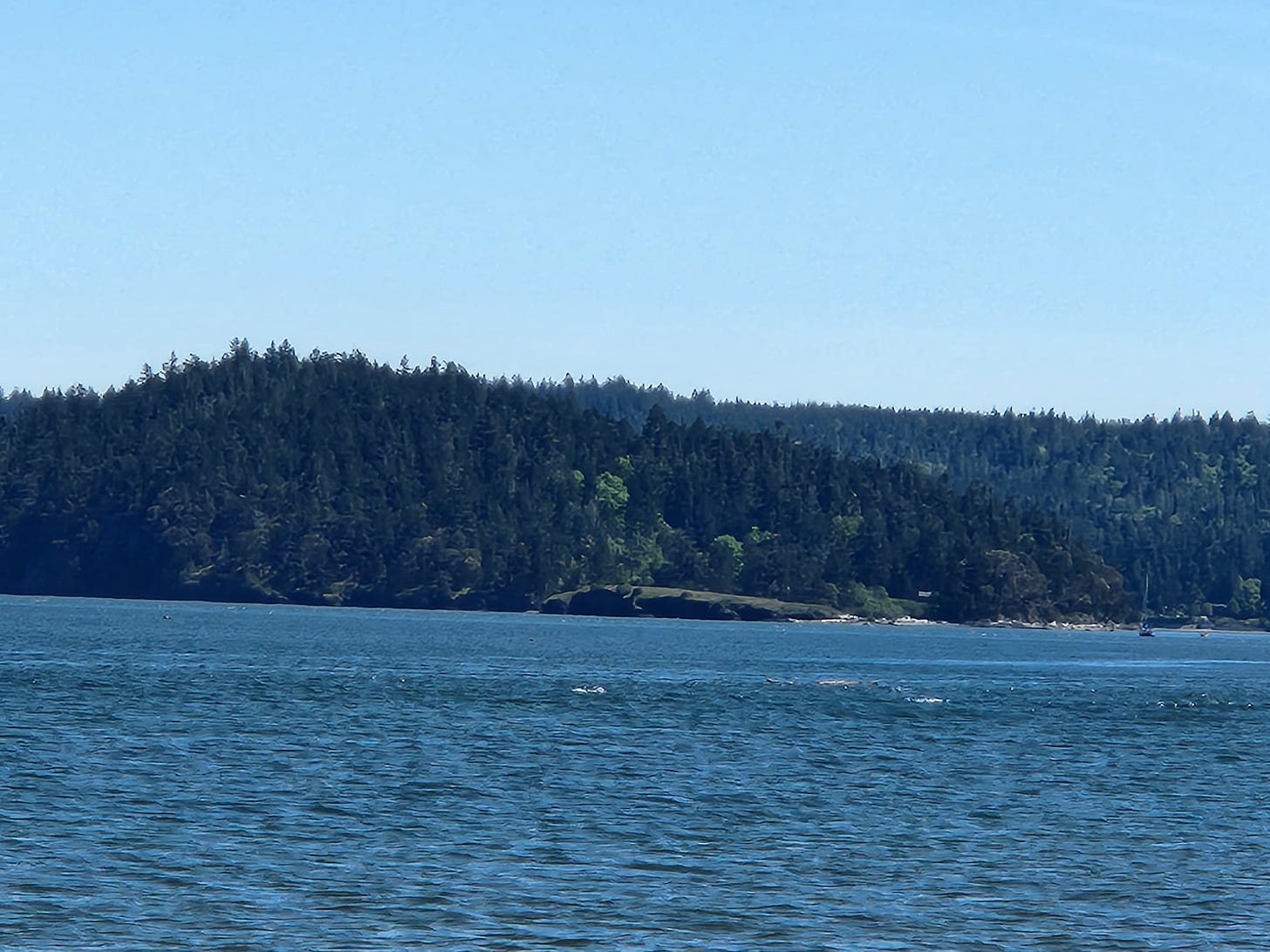
I could spend the day entirely on the beach, listening to waves, but I wanted to be in the trees. Going into the trees meant thinking in time.
Historical Interlude
After the Civil War, the area at Deception Pass became a US military reservation. It occupies a strategic spot near the entrance of Puget Sound. In the early 1920s, a portion of the reserve, which had not been used by the military and offered no agricultural opportunities, became a state park after the local farm bureau advocated for it. The idea was to attract tourists from the mainland (and, as an afterthought, for local islanders).
Somehow, big trees still existed there.
When the Depression settled over the nation, the Civilian Conservation Corps scattered across the country on various conservation and construction projects. Deception Pass State Park became a big beneficiary. These men built up the park and the big bridges spanning the narrow gap with fantastic currents churning below.
Today, one portion of the park contains an interpretive center and statue honoring the CCC. And we walked along the CCC Crossing Trail, a short way through the trees.
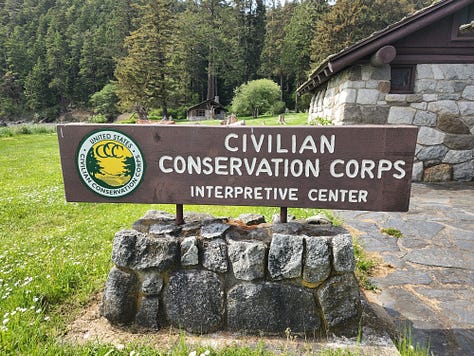
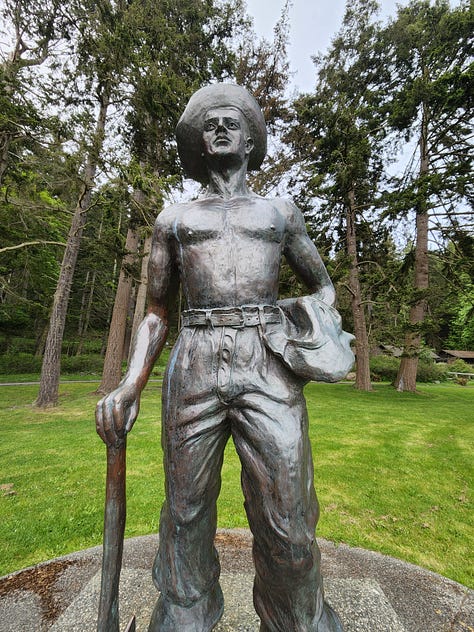
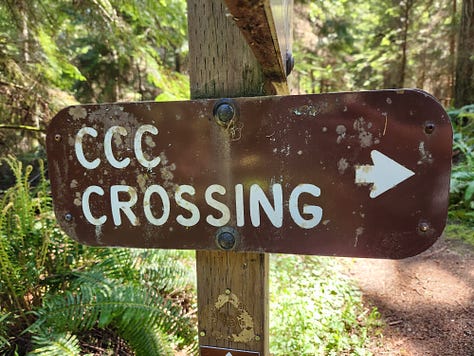
Walking the Woods
I’m no naturalist, so I miss most of what is happening in the forest. Still, any walk through Northwest woods prompts thoughts of cycles of time. Evidence is everywhere.
Rotting trees, signs of past fires, different ages of plant growth – these and more show dynamism at work. Meanwhile, the tall Douglas firs show why the timber companies so valued them – straight and few branches to deal with.
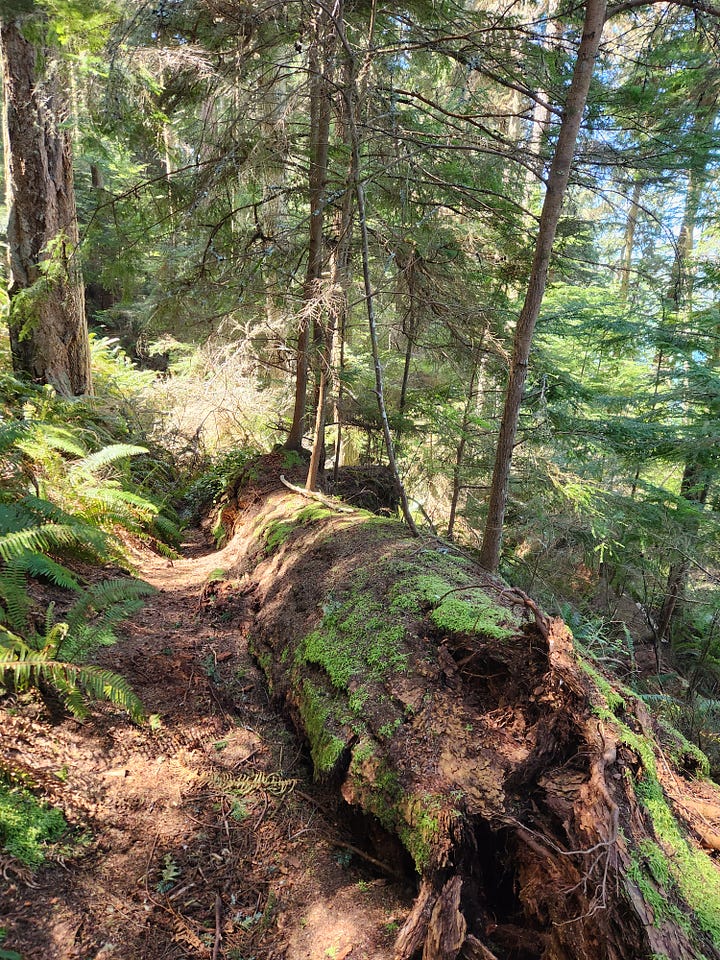
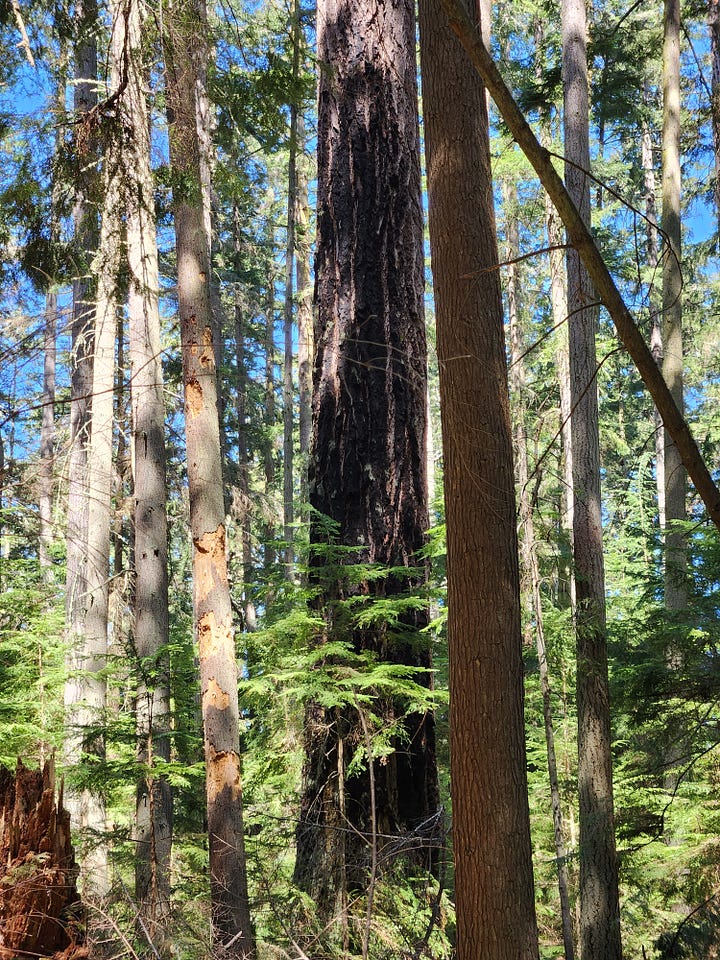
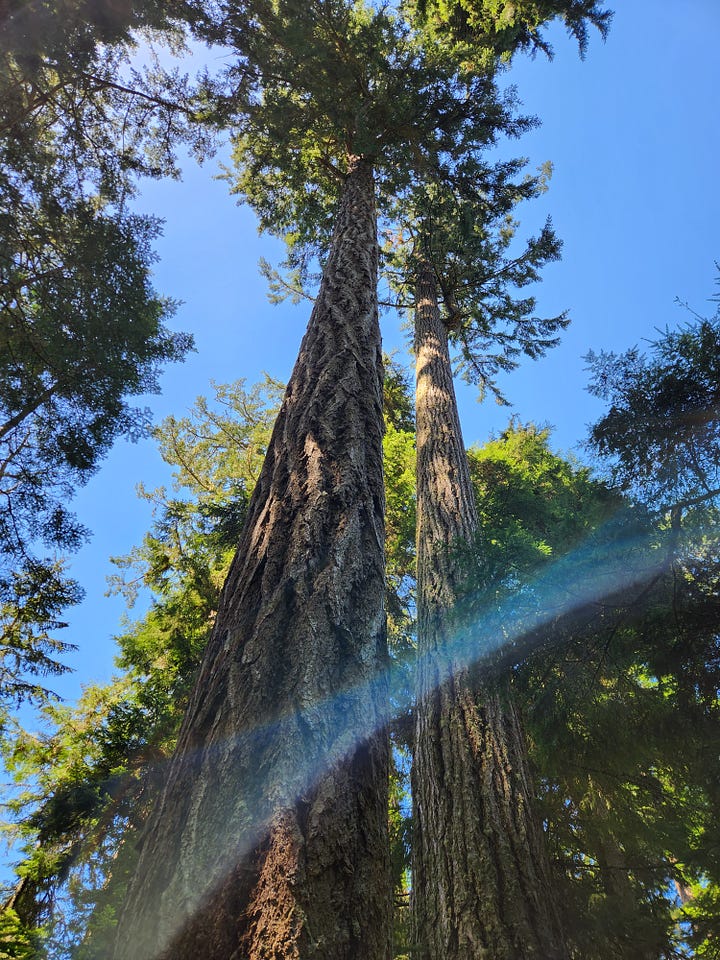
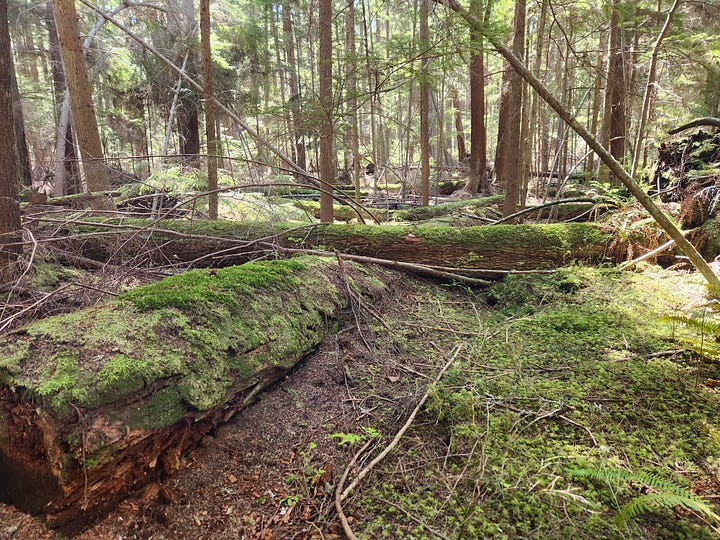
Walking amid it all, senses heightened, I keep thinking of changes.
A Place for Transitions
Exactly a year ago, I camped in a different part of the park. I had turned in grades for the final time and headed to the water and woods with my dog. Officially retired from my history professor job, I came to transition and unwind. I walked the trails with Samadhi focused on the view west, not knowing what was next. This year, I focused on the view east and brought a new pup, Gasparo, a new orientation and new companion. (Four or five generations back, these dogs share a grandparent.) I trust changes will continue.
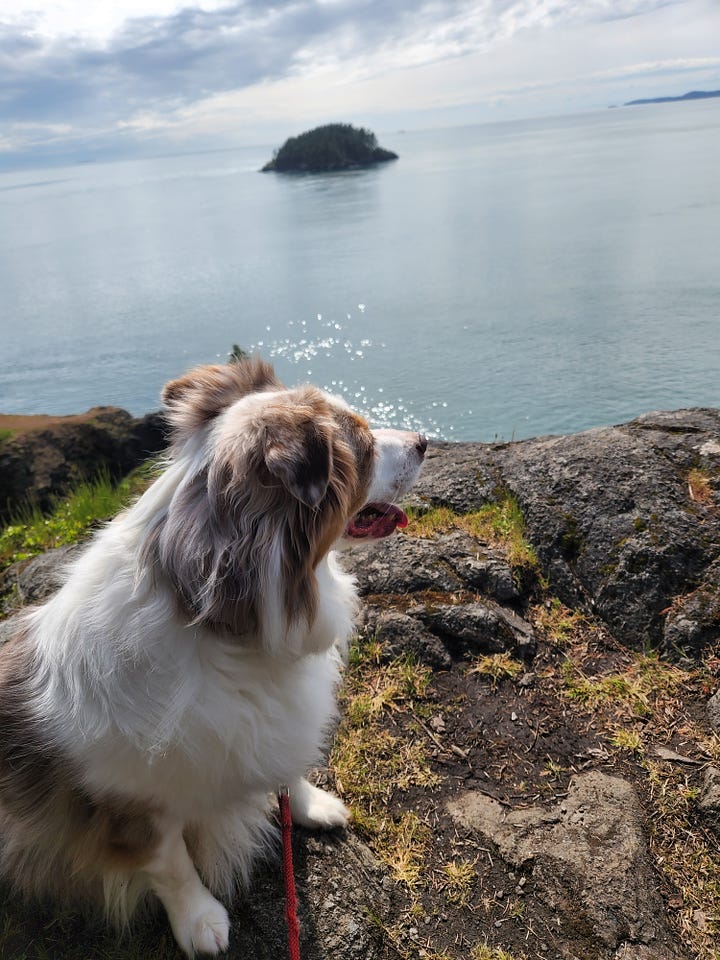
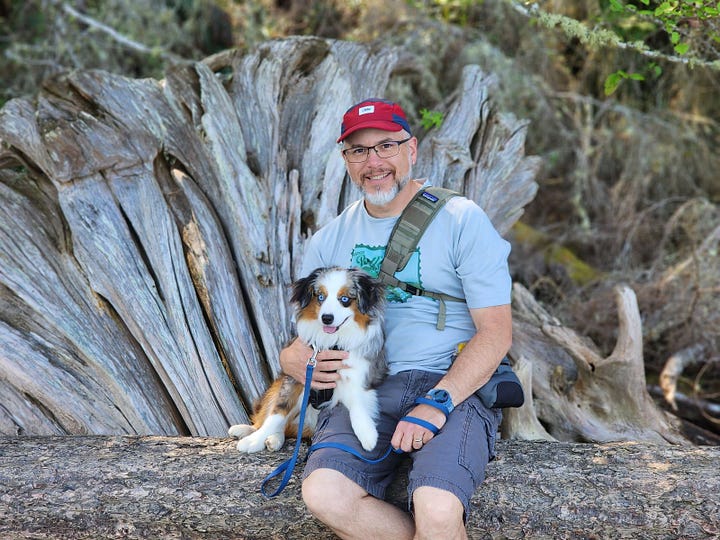
Closing Words
This week’s newsletter does not closely connect with earlier publications except for the earlier newsletters I’ve linked.
As always, you can find my books and books where some of my work is included at my Bookshop affiliate page (where, if you order, I get a small benefit).
Taking Bearings Next Week
As the cycle returns to The Library, I’m ready to dive into the world of loggers a century ago in an autobiographical novel. Stay tuned!
As we move in the direction of summer, I’m making a push to increase my subscribers and the engagement with these Taking Bearings newsletters. So if you want to help with that, please press the Like button below or leave a Comment. If you know others who might enjoy this weekly newsletter, please share it with them. And if you are able, consider upgrading to a paid subscription. Thank you for reading.
Richard White, Land Use, Environment, and Social Change: The Shaping of Island County, Washington (1980; Seattle: University of Washington Press, 1992), 142-54.


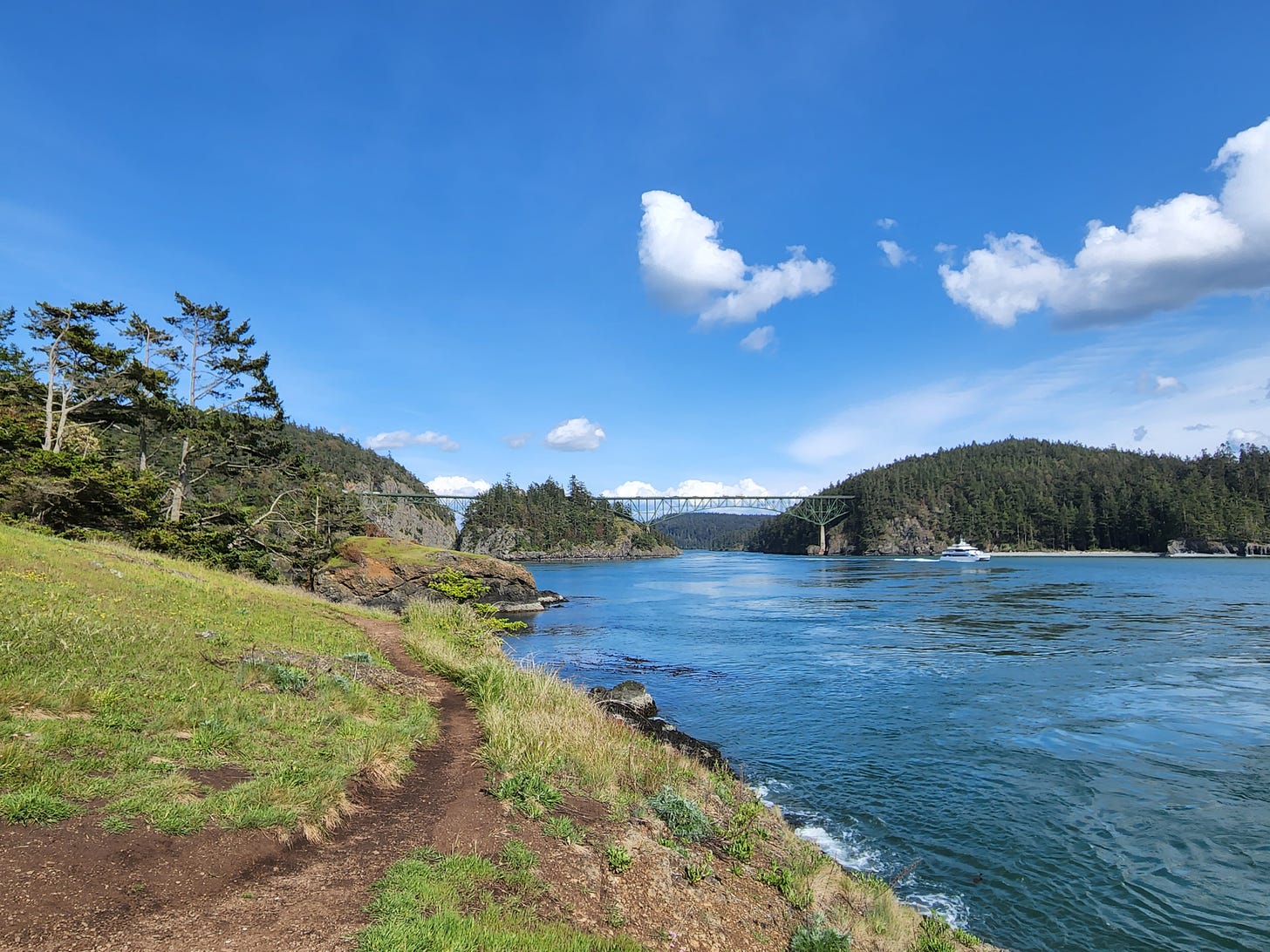
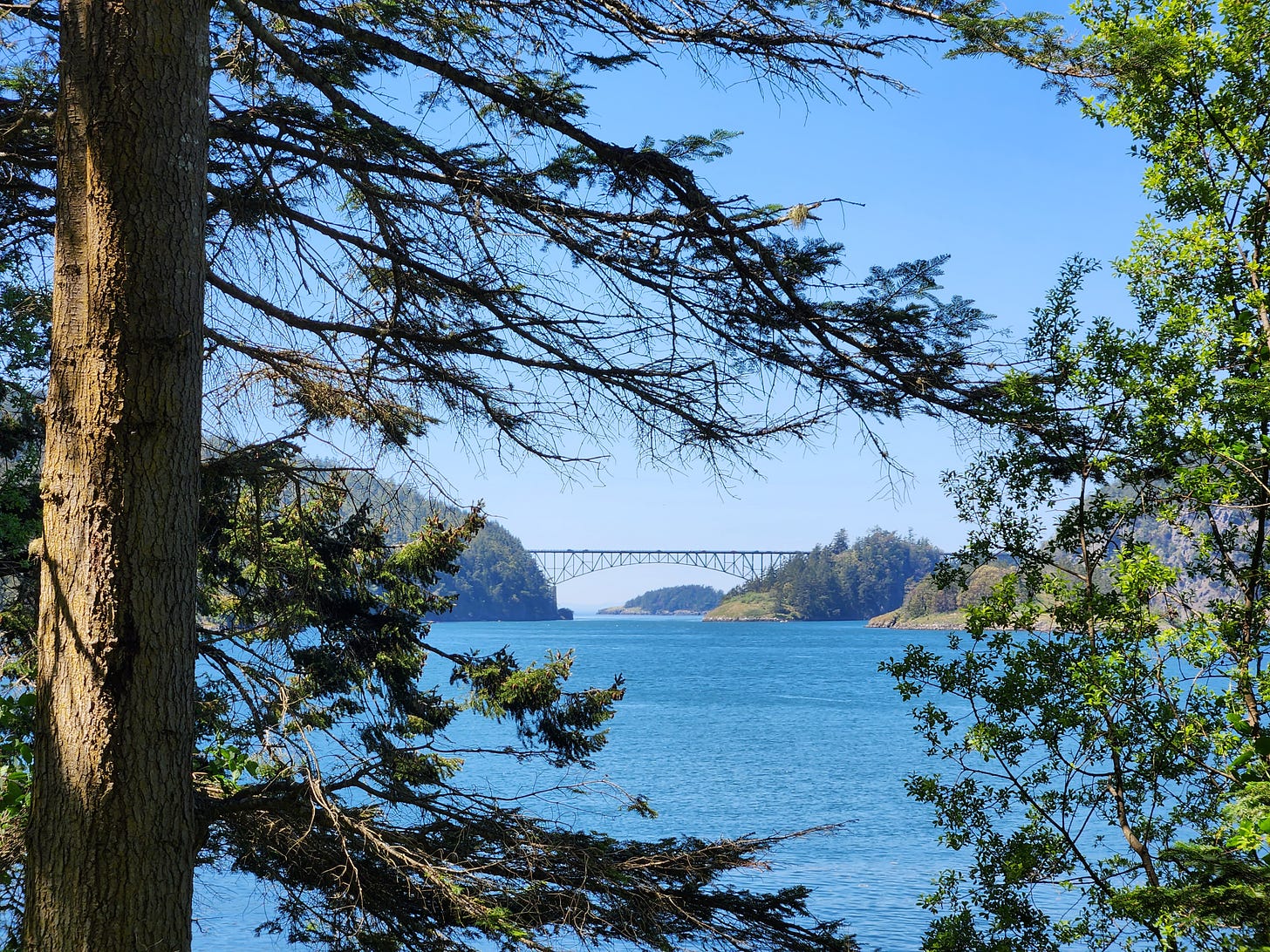
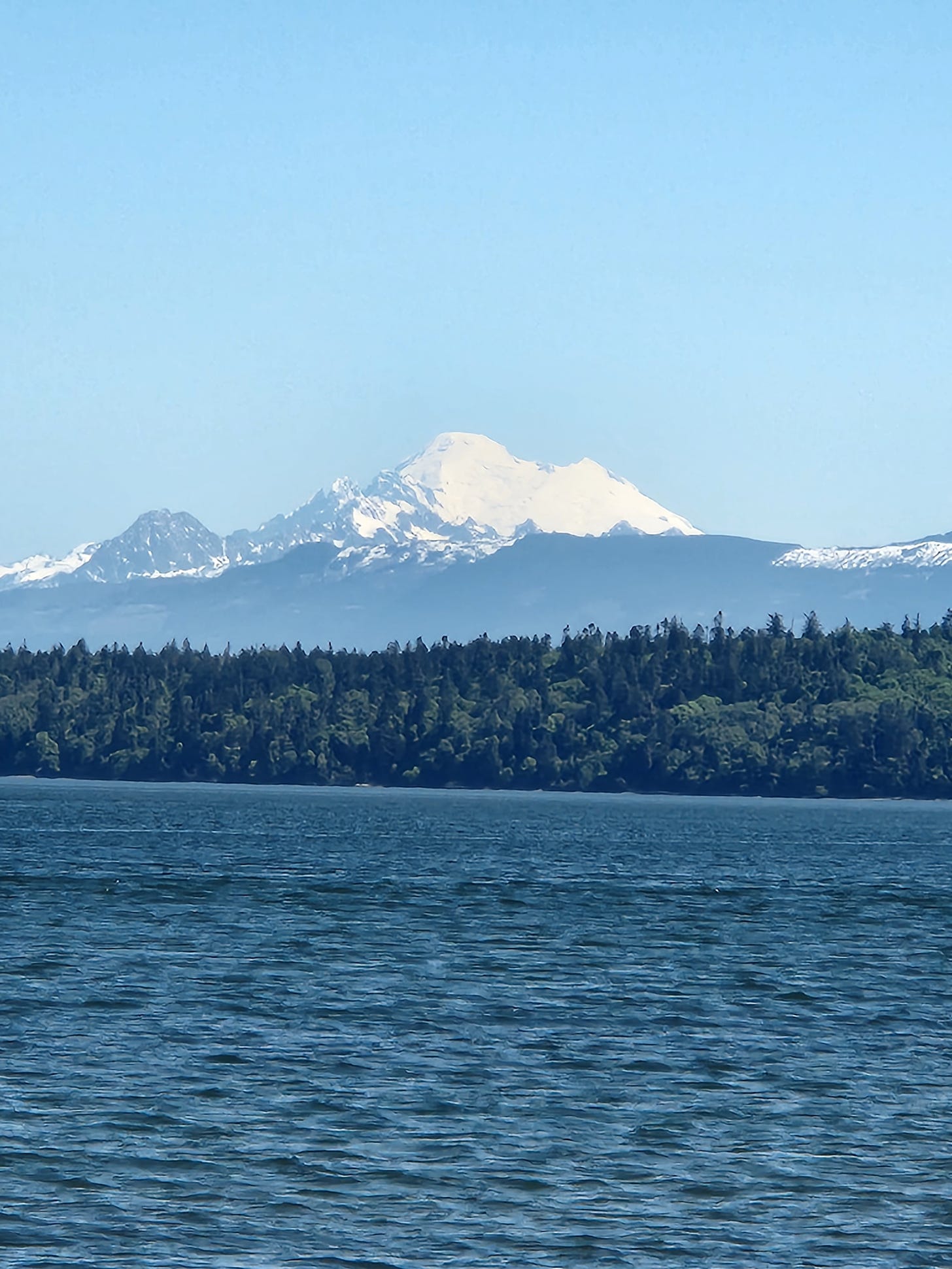
Spent summers there as a kid. Dad taught at WWC Marine Station. Then I took General Biology there in college, all three quarters in just one summer session, and then I worked there doing maintenance for a couple of summers. Hiked all over those trails, many times in the dark. It is a magical place in the world. Thanks for nudging the memories loose.